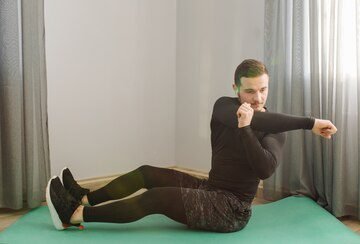Building a strong, defined chest is a goal for many people who work out, whether they’re seasoned gym-goers or beginners. However, achieving the best results requires not only commitment but also proper technique. The question is, how can you ensure that your chest exercises are maximizing your results, and not setting you up for disappointment due to poor form? In this article, we will explore exercises for your chest, how to maximize their benefits, and how poor form can negatively impact your progress and lead to injury.

The Importance of Proper Form in Chest Exercises
When it comes to exercises for your chest, form is everything. Poor form not only reduces the effectiveness of your workout, but it can also lead to muscle imbalances, joint strain, and even serious injuries. A key factor in achieving the best chest results is ensuring that you perform each exercise with precision and control. Whether you’re doing push-ups, bench presses, or chest flys, maintaining good posture and following the correct movement patterns is essential for maximizing your results.
Top Chest Exercises to Maximize Results
To get the most out of exercises for your chest, you need a mix of compound and isolation exercises. Here’s a breakdown of some of the most effective chest exercises that can help you build strength and muscle mass.
- Barbell Bench Press The barbell bench press is one of the most popular and effective exercises for your chest. It targets the pectoralis major, helping to build overall chest strength. To maximize results, it’s crucial to maintain proper form—keep your feet flat on the ground, ensure your back has a slight arch, and lower the bar to your chest, not your neck.
- Dumbbell Chest Press Dumbbell chest presses are another great option for chest development. The advantage of using dumbbells is that they require more stabilization, engaging more muscles in the chest and shoulders. When performing the dumbbell chest press, make sure to avoid letting your elbows flare out excessively, as this can strain the shoulders. Focus on controlled movement to avoid injury and maximize chest activation.
- Push-ups Push-ups are a classic bodyweight exercise that works the chest, shoulders, and triceps. To maximize the benefits of push-ups, make sure to keep your body in a straight line from head to heels. Dropping your hips or letting your back arch can diminish the effectiveness of the exercise and place undue stress on the lower back.
- Chest Flys Chest flys help to isolate the pectoral muscles and increase chest width. While this is an excellent exercise for muscle growth, improper form can lead to shoulder strain. To avoid this, focus on using a light to moderate weight, and control the movement throughout the entire range of motion. When performing chest flys, keep a slight bend in your elbows to protect the joints.
- Incline Bench Press The incline bench press is a variation of the barbell bench press that targets the upper portion of the chest. It’s perfect for developing a well-rounded chest. However, poor form, such as excessively arching your back or lifting too much weight, can cause injury. Keep your core tight, and focus on pushing the weight in a controlled manner to ensure you get the best results.

Struggling with Poor Form? Here’s How It Affects Your Chest Results
While exercises for your chest can provide impressive benefits when done correctly, improper form can do more harm than good. Struggling with poor form not only hinders muscle growth but can also lead to unwanted injuries, such as shoulder or wrist strains. Here are some common mistakes people make when performing chest exercises:
- Overarching the Back: One of the most common form mistakes in chest exercises is excessively arching the back, especially during barbell bench presses. This can lead to unnecessary strain on the spine and lower back. It’s crucial to maintain a neutral spine and avoid overarching to ensure proper technique and minimize risk of injury.
- Elbow Flaring: When performing presses or flys, many individuals flare their elbows out too wide, which can lead to shoulder discomfort and strain. To prevent this, aim to keep your elbows at a 45-degree angle from your body, which will place the correct amount of stress on your chest muscles and reduce risk of shoulder injury.
- Lifting Too Heavy: Lifting heavy weights with improper form is a surefire way to struggle with exercises for your chest. Instead of focusing on lifting as much weight as possible, it’s more effective to perform exercises with a moderate weight and perfect form. This ensures that your muscles are being properly activated without overloading the joints.
- Rushing the Movements: Speeding through exercises is another mistake that reduces the effectiveness of exercises for your chest. Controlled, slow movements are essential for engaging the muscles properly. Rushing through your sets can lead to improper form and less muscle activation, ultimately hindering your progress.
How to Maximize Results with Chest Exercises
To ensure you’re maximizing the results of your chest workouts, here are a few tips that will help you perfect your form and achieve the best outcomes:
- Warm Up Properly: Never skip your warm-up. Doing so can increase your risk of injury and reduce your performance. Perform dynamic stretches and light sets of your chosen exercises before going into heavier weights.
- Use a Full Range of Motion: To maximize muscle engagement, make sure to perform chest exercises with a full range of motion. For instance, during the bench press, lower the bar all the way down to your chest for maximum activation of the pectorals.
- Focus on Mind-Muscle Connection: Pay attention to the muscle you are targeting during each exercise. By concentrating on the chest muscles, you can ensure better muscle activation and better results over time.
- Avoid Overtraining: Even the best exercises for your chest can be ineffective if you overtrain. Allow enough recovery time between chest workouts to let your muscles rebuild. Overtraining can lead to fatigue, reduced muscle growth, and even injury.
- Progress Gradually: Increase the weight and intensity of your chest exercises gradually. Adding small increments of weight over time allows your body to adapt and grow without putting undue stress on your muscles or joints.

Conclusion: Exercises for Your Chest—Maximize Results with Proper Form
In conclusion, exercises for your chest can yield amazing results if performed with proper form and consistency. To build strength, increase muscle mass, and avoid injury, it’s essential to focus on correct posture, controlled movements, and appropriate weight selection. Struggling with poor form will only hinder your progress and put you at risk for injury, so take the time to perfect your technique.
By combining the right exercises for your chest, focusing on proper form, and allowing adequate recovery, you’ll be well on your way to achieving a stronger, more sculpted chest. Whether you’re a beginner or an experienced lifter, proper technique and patience are key to reaping the full benefits of your chest exercises.




